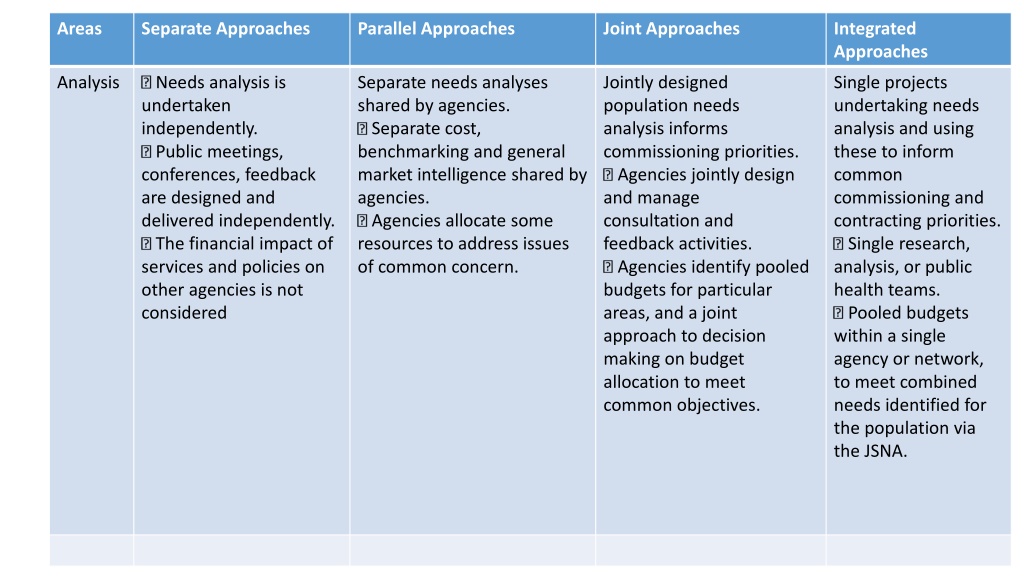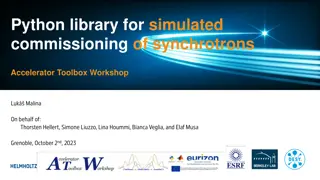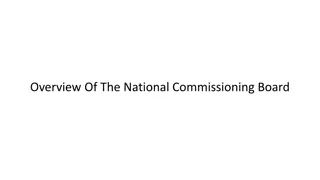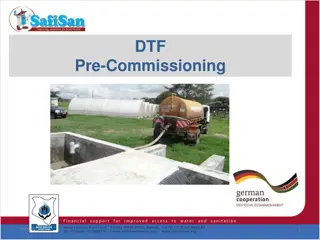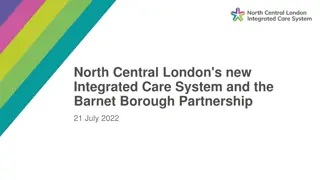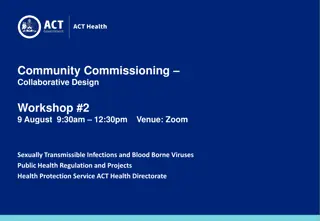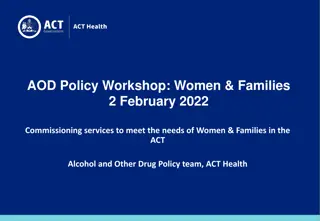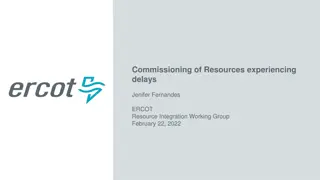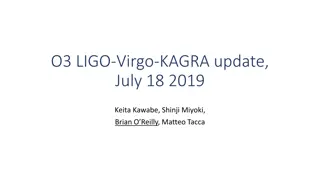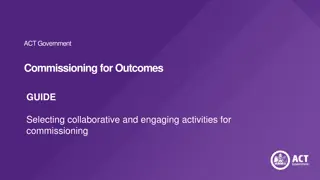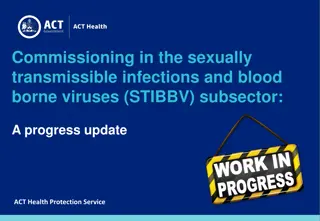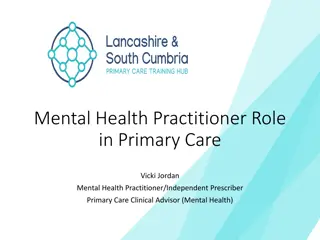Comparison of Approaches in Health and Social Care Commissioning
This content describes the different approaches - Separate, Parallel, Joint, and Integrated - in areas such as analysis, planning, delivery, and review within health and social care commissioning. It outlines how entities can progress from independent actions to collaborative efforts, showcasing the benefits of integrated approaches for improved outcomes.
Download Presentation

Please find below an Image/Link to download the presentation.
The content on the website is provided AS IS for your information and personal use only. It may not be sold, licensed, or shared on other websites without obtaining consent from the author. Download presentation by click this link. If you encounter any issues during the download, it is possible that the publisher has removed the file from their server.
E N D
Presentation Transcript
Areas Separate Approaches Parallel Approaches Joint Approaches Integrated Approaches Analysis Needs analysis is undertaken independently. Public meetings, conferences, feedback are designed and delivered independently. The financial impact of services and policies on other agencies is not considered Separate needs analyses shared by agencies. Separate cost, benchmarking and general market intelligence shared by agencies. Agencies allocate some resources to address issues of common concern. Jointly designed population needs analysis informs commissioning priorities. Agencies jointly design and manage consultation and feedback activities. Agencies identify pooled budgets for particular areas, and a joint approach to decision making on budget allocation to meet common objectives. Single projects undertaking needs analysis and using these to inform common commissioning and contracting priorities. Single research, analysis, or public health teams. Pooled budgets within a single agency or network, to meet combined needs identified for the population via the JSNA.
Areas Separate Approaches Parallel Approaches Joint Approaches Integrated Approaches Plan Agencies develop services to meet their own priorities. Single agency planning documents do not include key partner s priorities and drivers. Single-agency commissioning strategies. Agencies develop services to meet their own priorities. Single agency planning documents do not include key partner s priorities and drivers. Single-agency commissioning strategies. Shared commitment to improve outcomes (across client group) clearly outlined in the Health and Wellbeing Strategy. Joint strategy development teams producing common commissioning strategies and Inclusive planning and decision process as an integral partner. A transparent relationship between integrated bodies.
Areas Separate Approaches Parallel Approaches Joint Approaches Integrated Approaches Deliver A fragmented approach to use of providers and resources. Market facilitation sited in separate organizations. Agencies inform each other of purchasing intentions. Market development information shared across agencies when clearly relevant. Agencies develop joint service specifications and contracts or share contract risk. Joint appointments of commissioning staff. Jointly researched and produced market position statement. Integrated commissioning function, e.g. a single manager with responsibility for managing commissioning and contracting within a single organisation or network.
Areas Separate Approaches Parallel Approaches Joint Approaches Integrated Approaches Review Contract compliance information is used independently of other sources and solely within the organisation. Provider performance information not shared between agencies. Agencies share information about contracts and intelligence about performance where relevant. Agencies inform each other of performance improvement needs. Information from patients/ service users or service providers is shared when clearly relevant. Multi-agency review groups ensure robust joint arrangements for the collection and interpretation of performance information. Agencies jointly design monitoring frameworks. Integrated monitoring and review arrangements that result in a shared understanding of the effectiveness of current services and the evidence for changes in the future. A single function is responsible for managing and monitoring contracts to meet a single commissioning agenda.
